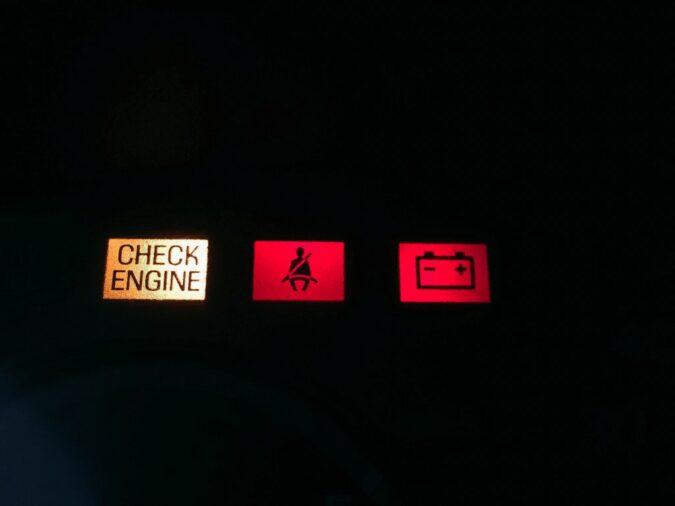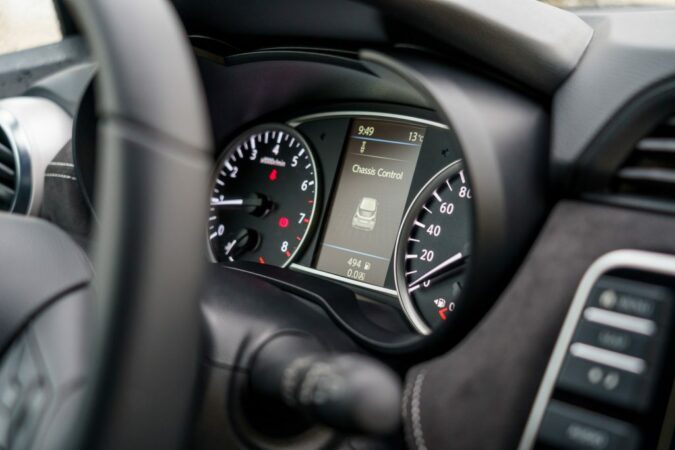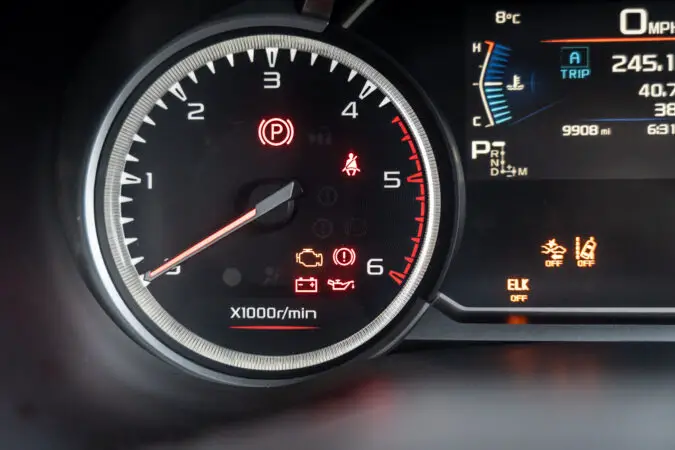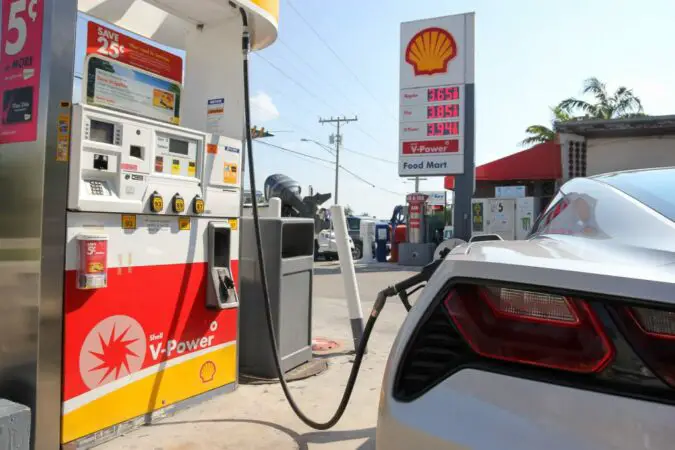Are you experiencing some weird symptoms in your car such as vacuum leaks and sensor-related issues? Well, in this case, you might have a manifold gasket leak on your car. But you shouldn’t worry because we are going to help you out.
Having a problem like this with vacuum leaks can be something that is really frustrating to deal with. Why I’m saying this? Well, this is the case because you will have a check engine light and a ton of error codes that will indicate problems with your sensors and not to mention the weird symptoms. More precisely the intake manifold gasket leak symptoms. These could be a real pain to deal with.
But there are also exhaust manifold gasket leaks if you didn’t know. They can also cause the same problems with your car. And luckily for you, we are going to cover both types of leaks in this article where we will learn everything in detail.
First, we are going to discuss more about the gaskets in general and learn their role. Then we will focus primarily on two different types of manifold gaskets. Which are the intake manifold gasket and the exhaust manifold gaskets. We will learn the symptoms that they produce when they break as well as how to replace them and at what cost. So, if you want to learn more on this topic, follow us till the end. Now let’s begin.
What Is A Gasket?
Now before we jump into more complex topics, let’s first cover the basics and learn what is a manifold gasket in general. What are the characteristics of this device and the role it plays inside of the combustion engine? If you are up to the task, you can jump to one of the specific types. If not, keep up with us for a bit.
So, what is a gasket? Well, a gasket in simple words is a mechanical seal that fills the space between two surfaces. This means that the gasket is the middle man that joins the two surfaces together and keeps a proper seal in order for the leaks to be avoided.
These leaks can be fluid leaks but also air leaks. It doesn’t matter, air can leak as well and cause a ton of trouble. And what is worth noting is that on your car you have a ton of these gaskets. There are head gaskets that sit between the engine cylinder head and the engine block.
There are manifold gaskets that sit between the intake and exhaust manifold, there are oil pan gaskets that keep the oil inside the pan and prevent leaks. You get my point.
These gaskets can be manufactured out of many different materials depending on the application and their use. They can be made out of paper, metal, silicone, cork, rubber, plastic polymer, and a ton of other materials.
For the sake of simplicity and avoid getting all over the place because there are a ton of these components, we will stick to the manifold gasket. And there are two types of these gaskets an intake gasket and an exhaust gasket. In the following chapter, we are going to elaborate more about them.
Types Of Gaskets & Problems
Now let’s dive into the topic and learn more about the manifold gasket. On each car, there are two different types of manifold gaskets. There is the gasket for the intake manifold and the gasket for the exhaust.
Both of these components play a crucial role when it comes to delivering a good driving performance. Once one of them has failed for example if you have a bad intake manifold gasket, you will get a leak.
What is worth noting is that the leaks you will get when it comes to these two types will be mostly air leaks. Only some cars have the coolant flowing in the intake manifold and nowadays they are getting rarer and rarer. In the next chapters, we will elaborate on both the intake and exhaust. We will learn the materials they are made of, the symptoms they produce, and the replacement. So, if you want to learn more, follow along.
Intake Gasket
The first type of manifold gasket that we are going to cover is the intake manifold gasket. So, what is this component and how does it work?
Well, the intake gasket is usually a rubber gasket that is mounted between the manifold and the intake ports of the cylinder head. There can be some designs that come as separate gaskets for each port while some can come as a whole unit depending much on the application.
This gasket is usually made out of rubber because the temperatures in the engine are relatively low. So, it doesn’t represent any problem for the gasket to be rubber. What is worth noting is that this gasket keeps the top of the engine sealed and does not allow any unmetered air to enter the combustion.
Also, in some cars, the coolant is run into the intake manifold so technically this gasket also helps the coolant not to escape and leak out. Even though when you have a bad intake manifold gasket, this situation often happens. But what are the different situations that you will notice when the intake manifold gasket fails? Let’s elaborate on them.
A) Intake Manifold Gasket Symptoms
Now let’s move on to learn the intake manifold gasket symptoms that you will experience when you are having problems with this gasket.
As you probably know, when a component fails, the symptoms are something unavoidable that will happen sooner or later. This is why you need to learn them to determine that indeed you are suffering from a gasket issue.
1. Check Engine Light
The first symptom when you have a bad gasket on the intake manifold will be the check engine light on the cluster. So, why is this the case?
Well, this will be the case because you will have a vacuum leak. Whenever a gasket fails it means that air will pass through freely and you will have a leak. Although not really visible to the naked eye, the leak will be there.
And this will cause in most cases a lean situation when you have a lean air to fuel mixture. This means that there will be too much air and too little fuel. So, the PCM will try to adjust this mixture and also notify you that you have a problem.
This problem will most often be represented through the P0171 or P0174 codes that indicate a lean mixture on bank 1 or bank 2 sides of your engine. For more insight, check out our guide on the P0174 Chevy code and the P0171 code Toyota.
2. Engine Misfires
The second symptom that you will probably notice when you have an intake manifold gasket leak will be the frequent misfires inside of the engine. But what are misfires in general?
Well, when a cylinder is misfiring it usually detonates the air to fuel mixture too soon or too late. Resulting in an uneven explosion that will cause the engine to misfire.
You will notice these pops and bangs coming from the exhaust. When this happens the engine is misfiring. In this case, this is caused by the lean mixture that we discussed previously.
3. Rough Idle
The second symptom of the intake manifold leak is the rough idle. The bad intake manifold gasket is basically allowing unmetered air to get into the intake and as we said, this will cause a lean air to fuel mixture.
This lean mixture will be represented through symptoms like rough idle, and misfires, and the engine will be down on power significantly. So, if you notice how the RPMs fluctuate, then you probably are having a vacuum leak caused by this gasket.
4. Leaking Coolant
The last symptom that we would like to cover in the symptoms of a bad intake manifold gasket section is the situation with the coolant leaks.
In some applications where there is coolant flow into the intake, the gaskets can also develop leaks. So, you can notice some green spots if you catch the leak early. Or even some rust spots on the front of the engine if you delay this repair.
B) Intake Manifold Gasket Sealer
So, what about the intake manifold gasket sealer. Is there such a thing? Well, actually not. You cannot seal a gasket that has failed.
But there is something called RTV that is useful in some applications and helps seal the joints in order for you to avoid leaks. You can try this type of sealant to seal the leak. But it is best to replace the gasket with a new one.
C) Intake Manifold Gasket Replacement
So, how an intake manifold gasket replacement is done the right way? Well, the first thing you will need to do is to get a replacement part.
Once you got replacement parts, you can jump into replacing the gasket. First, you will need to remove the intake snorkel, the fuel rails, and then the intake manifold. After that place the new part in and do everything in reverse order.
D) Intake Manifold Gasket Replacement Cost
And we came to the main topic which is the intake manifold gasket replacement cost. How much can you expect to pay to replace this gasket?
Well, the parts are really cheap, you can grab these gaskets for less than $20. But the hard part is removing the intake manifold and replacing this component. If you do this at a shop, you can expect to pay about $200 to $250. If you replace it by yourself you will only pay for the gasket
Exhaust Manifold Gasket
Now let’s cover another type of manifold gasket and that is the exhaust manifold gasket. This is a type of gasket that is usually manufactured from more expensive materials because the amount of heat that goes into the exhaust manifolds is insane.
These gaskets are heavy-duty and manufactured from embossed steel that is multi-layered. Sometimes they are made out of special fibers, graphite, and ceramic composites.
This gasket basically lies in between the exhaust manifold and the engine block. More precisely the exhaust ports. But they also can fail and produce symptoms. And that we are going to cover next.
A) Blown Exhaust Manifold Gasket Symptoms
Now let’s move on and discuss the blown exhaust manifold gasket symptoms. As the intake, so is the exhaust gasket producing symptoms.
Knowing these symptoms will really help you when it comes to diagnosing and fixing this problem quickly and effectively.
1. Check Engine Light
The first symptom associated with the exhaust manifold gasket leaks is the situation with the check engine light that will be present.
As you are probably aware that behind the exhaust manifold there are O2 sensors. These sensors measure the flow of gases in the exhaust. So, whenever you have a leak from the gases, the sensor will note this and will send the information to the PCM.
Then the PCM will decide to adjust the air to fuel ratio even though the fuel ratio is good. So, this might lead to something known as a rich situation when you have too much fuel and too little air. So, whenever you notice the check engine light, this might be the cause.
2. Hissing Noises
The second most common symptom when you have an exhaust manifold leak is the hissing noise. The engine will produce a hissing sound that will no doubt annoy you.
Whenever something hisses from the engine bay, you just know that you have some vacuum hose blown or possibly the exhaust manifold gasket has blown.
In some cases, especially on truck engines, the bolts that are holding this manifold might crack from the immense heat. So, keep this in mind as well.
3. Drop In Performance
The third most common symptom associated with an exhaust manifold leak is the drop in performance. You will notice this when you apply the foot on the throttle.
This will be partly because the O2 sensors don’t work as they should and you run rich and partly because there is a problem with the flow of gases in the exhaust.
The exhaust loves to run really smoothly and the gases glide smoothly through the pipes. This is why people are installing headers in order to boost their horsepower because of the better flow.
So, when you have a leak, it means that the flow of gas in your car or truck is terrible. Causing an immense drop in performance. Now let’s move on to the last symptom.
4. Bad Gas Mileage
The last symptom that we would like to cover when it comes to the bad exhaust manifold gasket is the bad gas mileage. So, why is this the case?
Well, this is the case, mostly because the flow of gases is rather poor and this is causing some backpressure in the engine and it is slowing it down.
This then affects the computer to readjust the air to fuel mixture and allow more gasoline to be dumped into the cylinder and this will cause your car to burn more fuel to get the same performance when the gasket was doing its job well.
So, whenever you have a drop in performance and a drop in fuel economy, you should check your exhaust manifolds and make sure that they are in good shape. If you have a leak, you will notice how there will be some black dust from the exhaust leak. So, finding these leaks is really easy to do. But how you can temporarily fix this problem? Let’s find out more on that next.
B) Temporary Fix For Exhaust Manifold Gasket Leak
So, how you can find a temporary fix for an exhaust manifold gasket leak? Well, it is a rather simple thing to find.
But the first thing you need to do is to locate the leak and see how big this leak is. Then you can jump to your local hardware store and buy some JB Weld Extreme Heat or some similar product that works for mufflers and other components that run really hot.
Then once the engine has cooled down, apply some of this compound and wait for it to dry off. Once dried and solid as a rock you can continue driving and enjoy your day.
C) Exhaust Manifold Gasket Replacement
But what about the exhaust manifold gasket replacement? How you can replace your exhaust manifold gasket?
Well, replacing this gasket can be really tricky because in order to get access to the manifold you will have to remove a ton of rusted bolts. And these bolts can break really easily. Not to forget to use a blow torch to heat up the bolts before removal. This way you will make sure that you will not end with broken bolts.
Also, if there are some bolts that are broken, you will have to retread them and install new ones. And this can be a rather difficult thing. So, be prepared for this stuff.
In the video above, you can see how this work is performed on a front-wheel-drive car. And as you can see it is not that complex. But if we are talking about a rear-wheel-drive car, in some instances the whole engine has to come off and this could cost a ton of money to do. This is why you need to be prepared to pay the replacement cost and frankly it is not cheap. More on that up next.
D) Exhaust Manifold Gasket Replacement Cost
So, what does the exhaust manifold gasket replacement cost? Well, on average the cost to replace this gasket is about $300.
It is rather expensive because it has a ton of work and depending on the engine it can get even more expensive if you have one or more broken bolts. So, you need to be prepared for this stuff. The part alone is no more than $40. The labor is the one that breaks the math.
Conclusion
In this article, we have covered quite a bit when it comes to the manifold gasket. We learned the basics about two different types of gaskets, the one for the intake and the one for the exhaust manifold.
Then we learned the symptoms that the gaskets produce when they fail and how to detect them. After that, we covered the replacement process and the costs involved in this work which is rather expensive to a certain point. Even though the parts are really inexpensive and affordable.
F.A.Q
Now let’s answer some frequently asked questions when it comes to the manifold gasket.
What Is A Manifold Gasket
A manifold gasket is a special seal that is installed between the engine and the manifold. It doesn’t matter if it’s an intake or exhaust manifold. This gasket has a special role to keep a tight seal between the manifold and the engine in order to prevent leaks.
How To Replace Intake Manifold Gasket
Replacing the intake manifold gasket is easy. First, you need to remove the plastic cover from the top of your engine and then move on to disassemble the top of the engine itself. Remove the injector rails, and the intake hose, and then remove the bolts that are holding the intake. Once the bolts are removed you can remove the intake and then replace the gasket. Then repeat the same procedure in reverse order.
How To Install Exhaust Manifold Gasket
Installing this gasket can be tricky. The first thing you will need is to get a blow torch to heat up the bolts and remove them one by one. If you don’t heat them up, you risk breaking them and then this will become a real headache. Once you removed all the bolts, the manifold will be able to slide out and you will be able to install the new gasket in place.
How Long Does It Take To Replace Exhaust Manifold Gasket
Replacing this component can take a while. More precisely about 2 hours. But if you have a broken bolt or a tricky engine, it might take even up to 6 hours to do this work on your car and this will result in an expensive bill.
How Much To Replace Intake Manifold Gasket
On average, the cost to replace an intake gasket is between $200 to $250. If you decide on replacing the component on your own, you can expect to pay somewhere around $30 for the parts alone.
How Long Can I Drive A Car With A Bad Intake Manifold Gasket
This greatly depends on the symptoms. If you experience symptoms then you should replace the gasket as soon as possible. If there are no symptoms, then you can delay this work on your car as much as you want.





